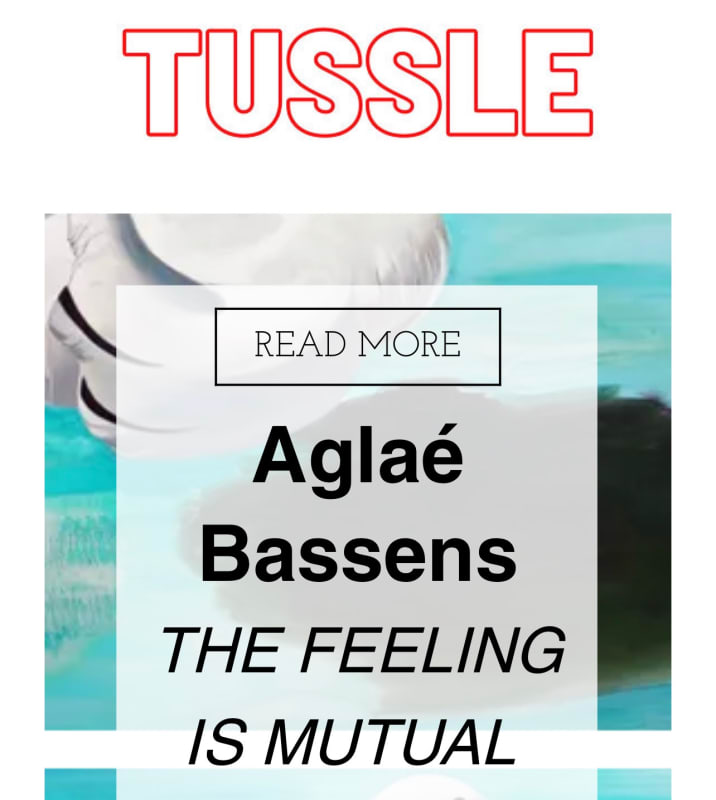Belgian-born painter Aglaé Bassens was educated in art at the Ruskin School of Drawing (BA) and the Slade School of Fine Art (MFA) in Britain. She now lives and works in Brooklyn. Her realist paintings are based on her archive of photographs; they are tied to a closely representational practice, but they do not imitate the close details of photographic works. In some ways, they are mysterious, presenting isolated images: a car with skewed windshield wipers covered in snow; a study of a man in a dark sweater, his head cropped from the painting, holding a cell phone in his hands; a swan in bright blue water with a very dark black shadow floating next to it. There is something arbitrary about the choice of imagery; the individual paintings do not join together in a common theme. But the often skewed and partial perspective of these works demonstrate Bassens’ fondness for a realism that, if not eccentric, plays with idiosyncrasy for the sake of thematic innovation.
Now that the New York art world is highly pluralistic, realist painting is no longer outside the pale. Indeed, it often offers a useful alternative to the repetitions of lyric abstraction that continue to be seen several generations after the basic approach came into public knowledge. By emphasizing the realistic, Bassens is not only joining the past but also establishing a direction for art in contrast to New York’s predisposition for non-objective painting. Her works usually consist of the parts-—there is a very interesting piece that describes two-thirds of a pair of legs in water, likely a pool, with the person’s body unseen but supported by a tan kickboard. Bassens’ orientation toward the partial is a way of recognizing the incomplete experience of a casual gaze. It also might be seen as a visual metaphor for our inability to fully know something, even should we be looking directly at it. Experience, of course, of any kind is never completely understood; as a result, we need to comment not only on the theme, the general content of the painting, but also on its expressiveness and skill.
In the painting “Checking In” (2021), we see a man holding a phone. The head is not visible in the work, but his upper body, clothed in a dark brown sweater, serves as a background for his expressively painted hands. More than two-thirds of the work is devoted to a flat white plane: the top of the desk supporting the person’s hands and forearms. It is a slightly baffling work of art—why the truncated figure of the image? But “Checking In” works. The idiosyncrasy of the formal arrangement invests Bassens' hidden theme with more than mere description. In “The Swan” (2021), a white swan with black accents and a blunted yellow beak rests on bright blue water, its absurdly dark shadow next to it, only roughly mirroring the creature. The black mass of the shadow surely exists outside any close resemblance to a true silhouette, resulting in an atmosphere both realistic and offbeat. Part of the attractiveness of Bassens’ art has to do with the veiled motivation behind the paintings; we don’t know why she chooses to paint the images she does.
“Poor Visibility” (2021) presents a car covered in show, its two windshield wipers at distorted angles. Bassens’ audience could mistake the image for a pair of twigs sticking out from a snowdrift, but closer inspection denies that reading. On the edge of the car on either side we find traces of black, indicating it is an automobile we are looking at. There is also a driver’s side mirror that is visible. Why would Bassens direct her attention to so ordinary an image? There is little that is heroic in her choice of theme. But maybe this is the artist’s way of removing rhetorical narrative from her art. Everyday life, time’s passage, becomes evident in this show, titled “The Feeling Is Mutual.” Evidently, these partial portraits of everyday life are meant to celebrate an undercurrent of emotion, to be shared by both artist and viewer. Feeling drives these pictures of daily life, rather than shared imagery or common conceptual origin. While the works evade grandeur, they comment on how life is lived now, in an understated manner. Bassens thus records a continuity based on customary existence, presenting us with pictures of life commonly lived.


